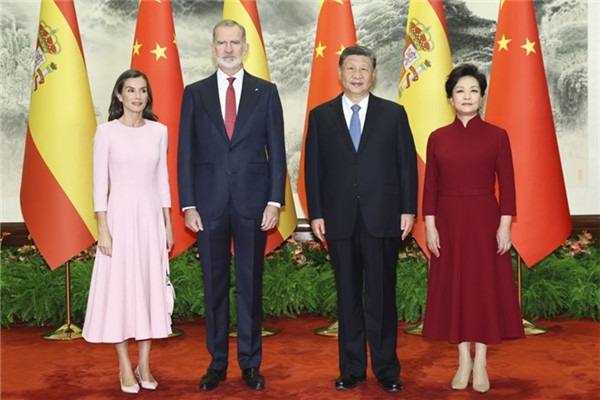New guideline strengthens tech education
Plan promotes curiosity, creativity and hands-on learning from an early age

China aims to further strengthen science and technology education in primary and secondary schools to cultivate students' scientific interest, innovative awareness and practical abilities — a move deemed crucial by experts in building a strong, self-reliant nation with a sufficient talent pool.
By 2030, a well-structured system for science and technology education in primary and secondary schools will be in place with an improved curriculum, higher-quality teaching and better evaluation methods and resource support, according to a guideline released by the Ministry of Education and six other departments during a news conference on Wednesday.
Tian Zuyin, director of the ministry's Department of Basic Education, said the guideline is part of efforts to implement the principles introduced at the fourth plenary session of the 20th Central Committee of the Communist Party of China, which called for better coordination in building a strong education and science system to ensure a strong talent pool.
Primary and secondary schools are an important stage to cultivate students' scientific interest, innovative awareness and practical abilities, Tian said. Strengthening science and technology education is a key measure to promote students' all-around development and serves as a significant path to support the nation's innovation-driven strategy and cultivate future talent in scientific innovation, he said.
The guideline states that by 2035, an integrated science education ecosystem will be fully established, with improved social resource support mechanisms and widespread adoption of project-based, inquiry-led and interdisciplinary teaching methods.
It outlines specific focuses for different educational stages. In lower primary grades, the emphasis will be on stimulating curiosity through playful and life-oriented activities. Senior primary students will engage in hands-on experiments and project-based tasks, while middle school students will participate in cross-disciplinary projects aimed at solving real-world problems. High school students will be guided to understand cutting-edge advances in science and technology and carry out experimental research and engineering projects, the guideline said.
The document also highlights the integration of scientific and humanistic education, encouraging students to reflect on the social, environmental and ethical impacts of technological development. Humanistic education should include more content on the history of science and the deeds of famous scientists so students can better understand how scientific and technological advancement has pushed forward human civilization, it said.
In terms of assessment, the guideline promotes diversified and developmental evaluation methods and discourages an overreliance on examinations to avoid creating an excessive burden on teachers and students.
Tian said the establishment of the UNESCO International Institute for STEM Education, which was opened in Shanghai in September, fully reflects the international community's recognition of China's science and technology education.
Several provincial-level regions have taken the lead in promoting science education.
Zhejiang province, for example, has included technology and information technology in its college entrance examination as optional subjects and has offered integrated science courses in middle schools for 37 years, he said.
Meanwhile, Jiangsu province has released a curriculum guide on science and technology education and developed 28 volumes of cross-disciplinary teaching resources, and Chongqing will invest 10 million yuan ($1.4 million) this year to build 20 science labs for schools.
Ren Haihong, an official from the China Association for Science and Technology, said there are currently 1,150 science museums, 763 mobile science facilities and 1,849 popular science vehicles in operation nationwide, serving 150 million visitors each year.
Additionally, 1,274 national science education bases across various industries have become important venues for students' social practice activities. Various national societies are also leveraging their expertise to build specialized science popularization facilities serving primary and secondary schools, he said.
Xu Xuejun, vice-president of Tongji University, said strengthening science and technology education from an early age is key to building a strong education system and helps identify and nurture talent for the country's long-term scientific and technological advancement.
"Science and technology rely on talent, and talent originates from education," he said. "By starting from basic education and systematically enhancing young people's technological innovation capabilities, a virtuous cycle — where education cultivates talent, talent promotes technology and technology revitalizes the nation — can be formed."
- New guideline strengthens tech education
- Elderly need better health management services
- Forum held in Beijing to promote cross-Strait development, exchange
- Xi, president of Comoros exchange congratulations on 50th anniversary of ties
- Retired medical workers urged to support seniors
- Typhoon Fung-wong makes landfall in Taiwan





































